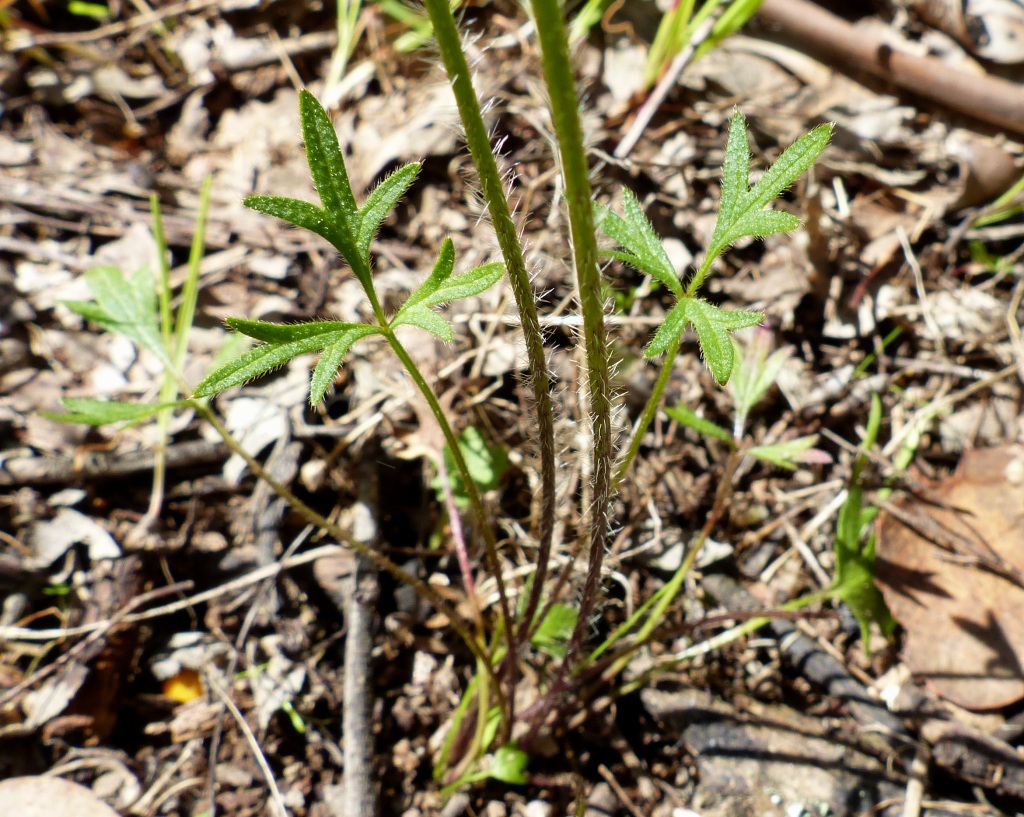Ranunculus pachycarpus
B.G.Briggs Thick-fruit ButtercupPerennial, mostly c. 10–25 cm tall, with narrowly tuberiform roots. Leaves all or mostly tufted at base; petioles 1–12 cm long, with fine semi-appressed hairs; lamina deltoid to ovate in outline, c. 1–3 cm long and wide, with scattered or rather dense semi-appressed hairs, 3-lobed to trifoliolate, the segments acutely toothed or further lobed. Flowering stems erect, exceeding leaves, with spreading hairs below and appressed ones shortly below flower(s), 1–5-flowered; sepals 5, spreading, ovate to obovate, 3–7 mm long, hairy on back; petals 5, broadly obovate, 6–15 mm long, 3–10 mm wide, yellow, glossy; nectary lobe oblong to cuneate, free for c. half its length, c. 1–2 mm long overall; stamens 20–50. Achenes c. 10–20, cuneate and very plump to almost spherical or slightly squared, sometimes broadly grooved dorsally, 2.5–4 mm long, pericarp thick and spongy, smooth or obscurely ridged on sides; beak weakly curved or straight with a sharply recurved tip, 1–2 mm long; receptacle hispid between achenes, glabrous in the staminal zone. Flowers Aug.–Nov.
LoM, MuM, Wim, VVP, VRiv, MuF, Gold, CVU, GGr, NIS, EGL, WPro, HSF, HNF, VAlp. Also SA, NSW. In Victoria locally common north of the Great Dividing Range but absent from the far north-west, usually in seasonally wet soil, often shallowly overlying rock.
Close to R. robertsonii from which it is distinguished by the very plump achenes and the spreading hairs towards the base of the flowering stems.
Walsh, N.G. (1996). Ranunculaceae. In: Walsh, N.G.; Entwisle, T.J., Flora of Victoria Vol. 3, Dicotyledons Winteraceae to Myrtaceae, pp. 35–63. Inkata Press, Melbourne.
 Spinning
Spinning


